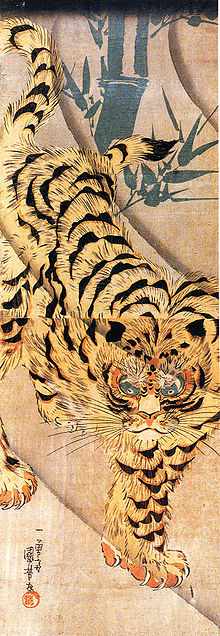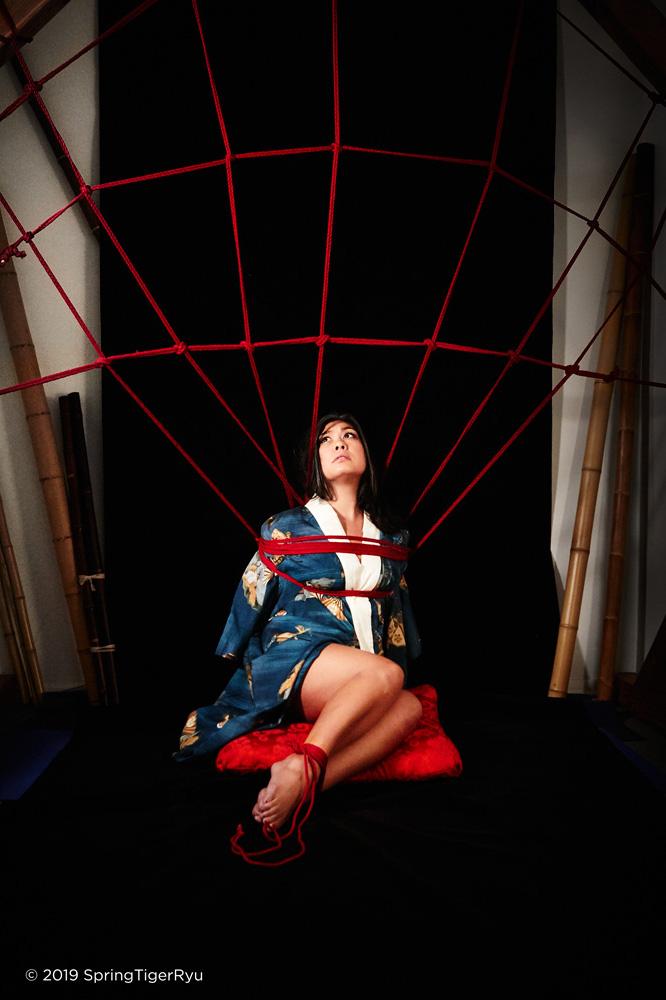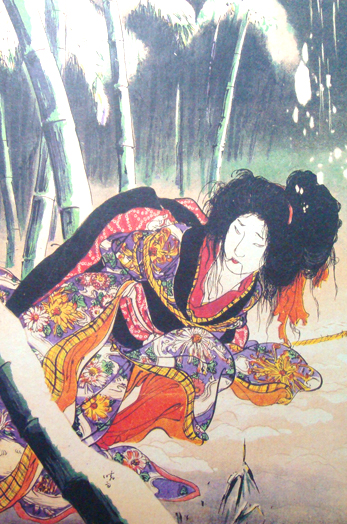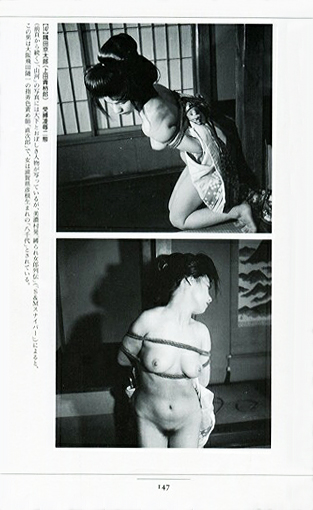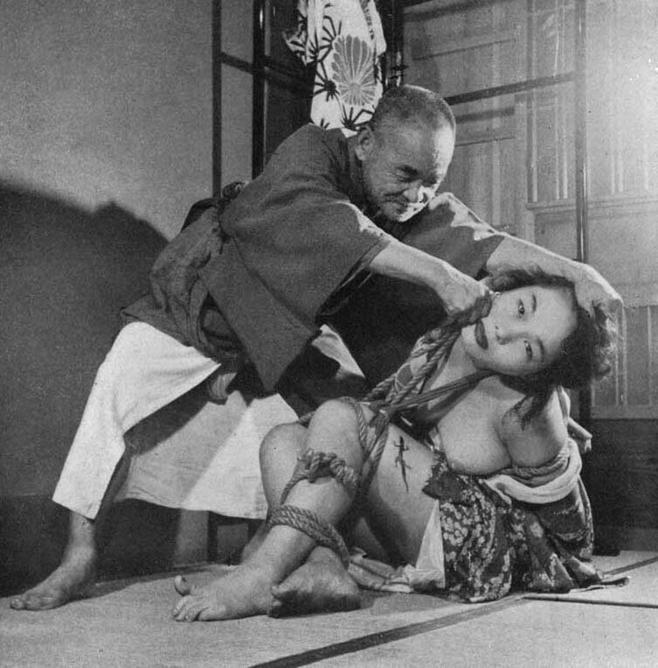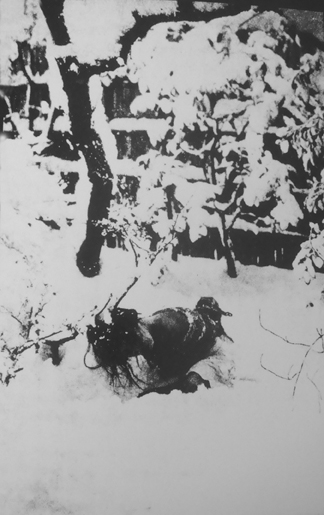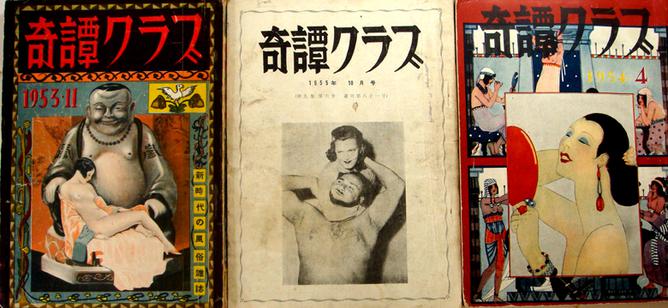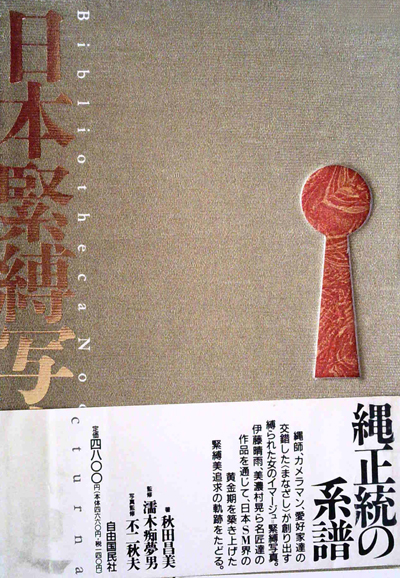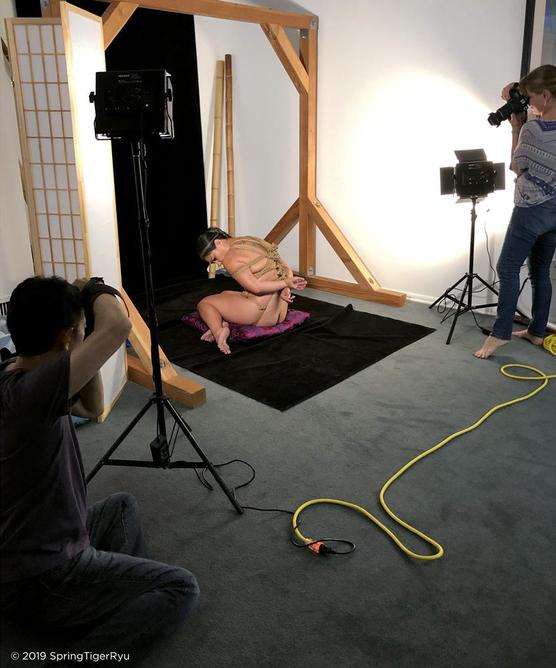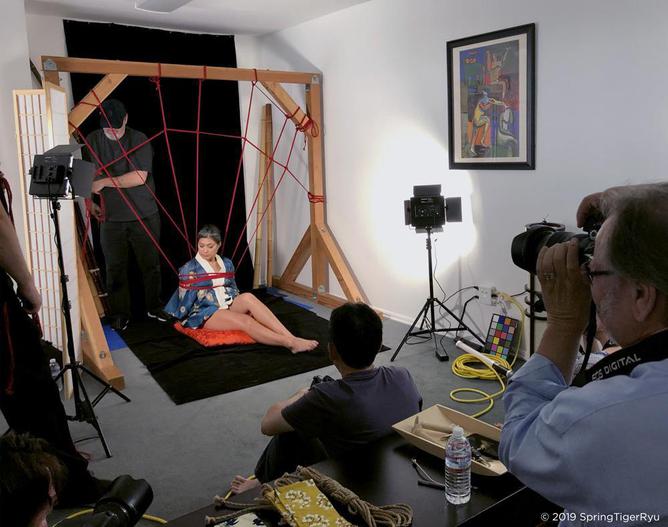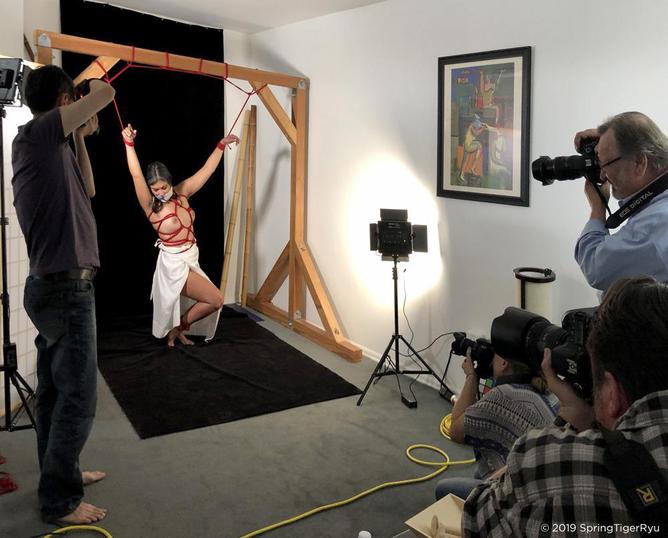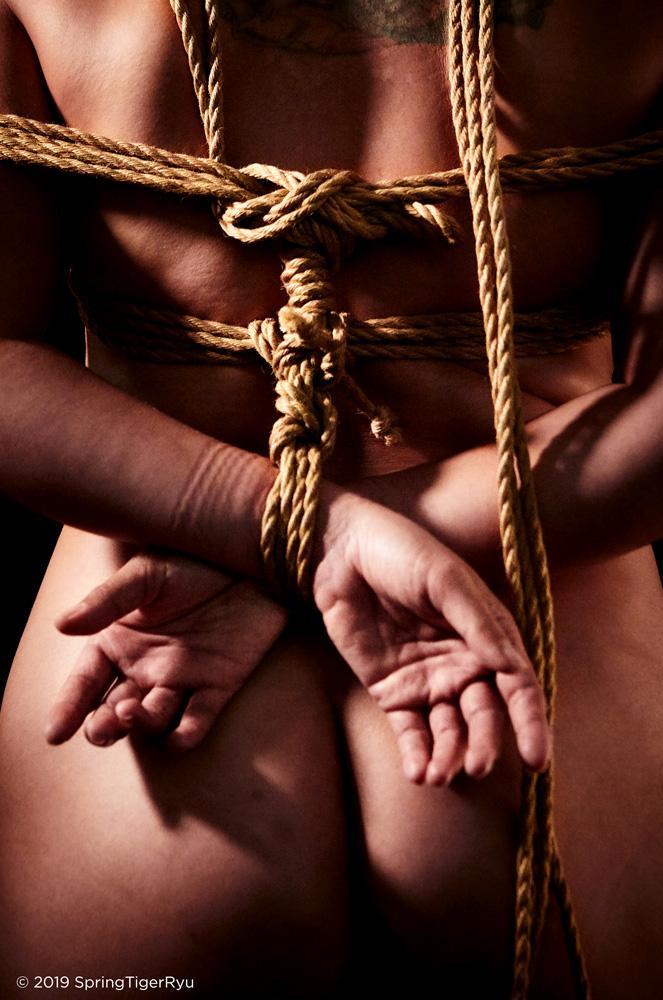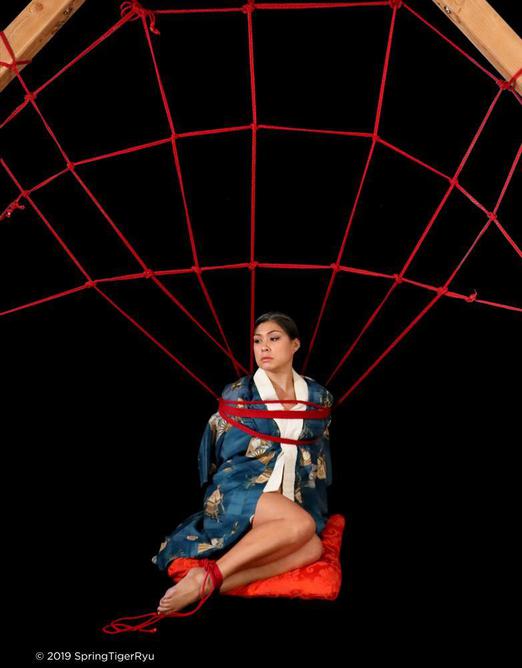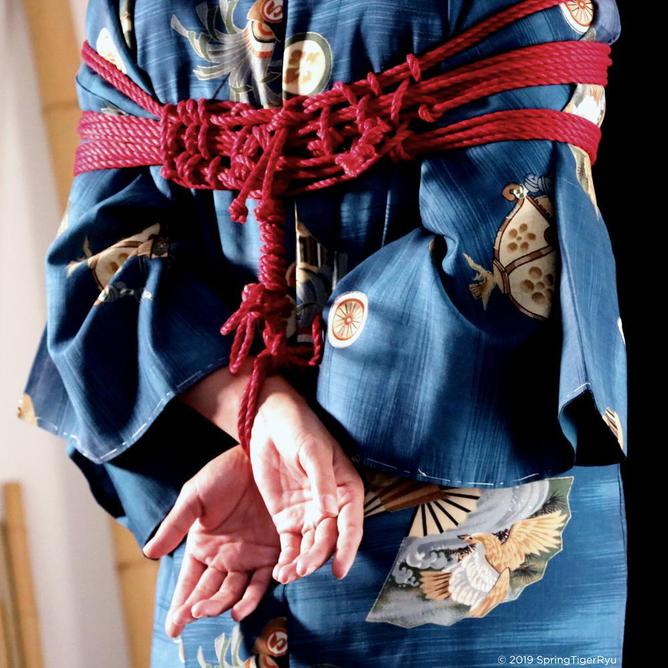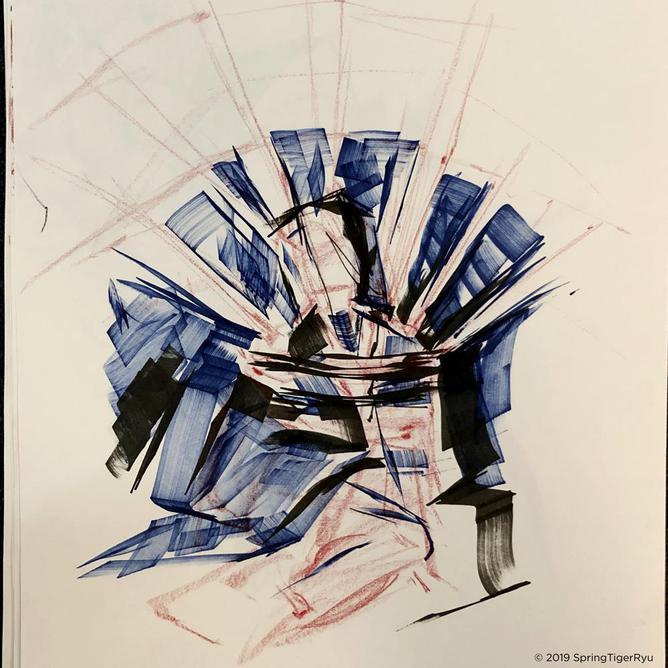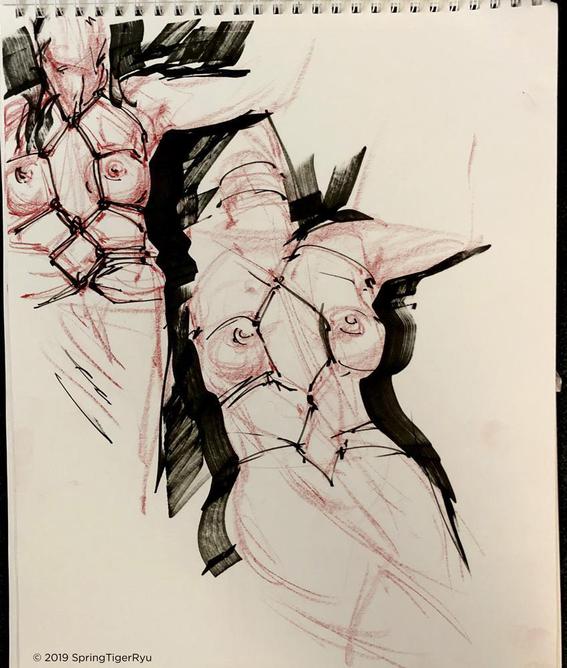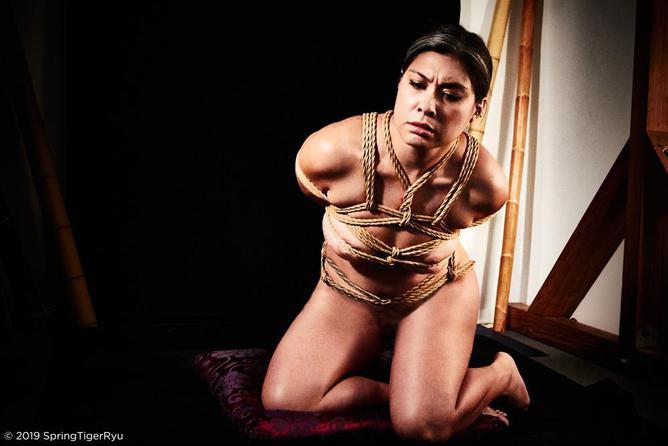Or everything you always wanted to know about Japanese erotic bondage when you suddenly realized that you didn't speak Japanese
The Beauty of Kinbaku
Kinbaku
and Art
Please note: no part of these articles may be reproduced by any means without the express written consent of the author or the publisher, King Cat Ink.
This page is best viewed on Google Chrome.
Behind the scenes still of the 3 story suspension - 4 - take off.
Or everything you always wanted to know about Japanese erotic bondage when you suddenly realized that you didn't speak Japanese
The Beauty of Kinbaku
Kinbaku
and Art
Please note: no part of these articles may be reproduced by any means without the express written consent of the author or the publisher, King Cat Ink.
Chapter Nineteen
Kinbaku and Art - Satsuei-kai–the history of bondage photography in Japan
by Master “ K”
This page is best viewed on Google Chrome.
Please join us next time as we continue our exploration into the fascinating subject of Kinbuku and Art!
Itoh (1882-1961) was really the first to popularize Kinbaku photography in Japan when he began to take pictures of his models which he would later use to create his magnificent and colorful paintings and prints of seme-e (“torment art”).
I write about this time and it’s fascinating personalities extensively in “The Beauty of Kinbaku – or everything you ever wanted to know about Japanese erotic bondage when you suddenly realized you didn’t speak Japanese” (find it here on Amazon) but since modern versions of this venerable tradition have become more popular in both North America and Europe I thought a small article on the history of the original Satsuei-kai might be of some interest.
Behind the scenes still of the 3 story suspension - 4 - take off.
In time, others began to stage such photographic events in both indoor and outdoor locations and the fruits of these sessions began to be used by the publishers of the many BDSM and rope books that proliferated in Japan after World War II.
In these days when every morning’s flood of Twitter posts and email brings in new bondage photographs from all over the world and sites dedicated to Japanese style tying and photos proliferate, it’s hard to remember that there was once a time when these photos were considered rare treasures and “forbidden fruit” and coveted by fans as precious and rare images of fantasy and imagination.
Inspired by the artist’s interest in Ukiyo-e (woodblock) prints showing bondage scenes, often based on kabuki plays, these photo events began to attract public attention and Itoh’s work became famous, or at least infamous, and was even once written up in a mainstream Sunday magazine!
Magazines such as Kitan Club and Uramado printed many of these pictures from the camera clubs before they began staging their own studio shoots with professional models. And while these shoots certainly increased the slickness of the finished photographs, something was undoubtedly lost. As the authors of the wonderful “History of Bondage Photography in Japan” (available only in Japanese) write, “It is important to understand the influence of the Satsuei-kai. In the SM magazines that followed we see a new type of photography that is undoubtedly professional... but many of these pictures lack the force of the photographs taken by the true devotees who participated in Satsuei-kai,… and it is impossible to deny the influence of the Satsuei-kai on today’s bondage photography.”
In it over 50 photographers gathered at a beautiful wood frame Japanese style home (one of the few remaining in downtown Tokyo) and sat mesmerized as sensei bound a lovely model. He then pointed to the one spot where he would allow photographs to be taken at the perfect angle and all the photographers, both amateurs and professionals, lined up single file for their one minute on the designated spot to take their pictures!
As with all things relating to modern Kinbaku Art, it all starts with the “father of Kinbaku” Itoh Seiu.
This was the era of the classic Satsuei-kai or “photography club” events when groups of amateur enthusiasts would form, find exotic locations, engage beautiful models and fledgling rope masters would try their hand at creating erotic, BDSM images for private consumption.
Itoh Seiu (1882-1961)
It was held in our Beverly Hills dojo, was extremely well attended and its themes were drawn from some of the classic styles of Kinbaku that featured in the earlier days of the Satsuei-kai. These included poses with stunning kimonos, nudes and even a little elaborate staging a la Itoh Seiu!
Soon Itoh and his followers were holding more formalized sessions, often elaborately staged and costumed events in theaters, where invited spectators and photographers could come watch and even participate.
Of course, in the United States this regimentation would never be tolerated. In the Satsuei-kai that my associates and I at the Spring Tiger Ryu hold, the photographers are given the freedom to move around and the graphic artists the freedom to pick their positions.
Today this tradition continues and Satsuei-kai type events for artists and photographers continue to be held across the world.
Generally speaking, we present at least two of these art events a year and recently we sponsored a free, invitation only event for some of the wonderful artists who have supported us so loyally over the years.
Yukimura Haruki-sensei and model.
Behind the scenes production shot of nude kinbaku pose to conclude the Satsuei-kai .
Artist's sketch from the John Willie event.
Cover and a page showing Satsuei-kai photographs from "The History of Bondage Photography in Japan" by Masami Akita and Chimuo Nureki.
Itoh Seiu at work on a sketch of his bound model circa the late 1950's.
Artisit's sketchbook of the above pose by RPMArt
Graphic artist's abstract impression of the above kimono tie by RPMAart.
Seme-e pose in the manner of Itoh Seiu.
Nude back. Photo by Kevin Mack.
Even the back of a tie can be a subject for the artists and photographers at a Satsuei-kai.
Photo by Kristina Lloyd.
The lovely model MarissaLynn waits patiently for the bakushi to finish. Photo by Kevin Mack.
Photograph and finished artwork by Itoh of bound woman in snow.
Three covers of the famous Japanese BDSM magazine Kitan Club.
Finished portrait of the kimono pose. The slight asymmetry in the rope background design is intentional.
Photo by Kristina Lloyd.
And so the tradition of the Satsuei-kai was born.
I have been fortunate enough to attend any number of Satsuei-kai over the years. Perhaps the most interesting was one held by my late sensei Yukimura Haruki in Tokyo in 2013.
We were fortunate to obtain the services of the lovely MarissaLynn as our model and, as can be seen by the attached behind-the-scenes photos, as well as by some of the finished work (graciously donated by our participants for this article), the venerable Satsuei-kai is still alive and well as we proceed into the 21st-century!
Finished portrait of nude kinbaku pose in the style of Yukimura Haruki-sensei. Photo by Kevin Mack.
A lot of work goes into preparing both the background rope design and the model's kinbaku in a Satseui-kai.
Behind the scenes of a modern Satsuei-kai hosted by Sping Tiger Ryu.
With special thanks to our wonderful participants and especially the beautiful MarissaLynn, organizer extraordinare zElement and rope associate "L"!
Links to Other Chapters of Kinbaku and Art
